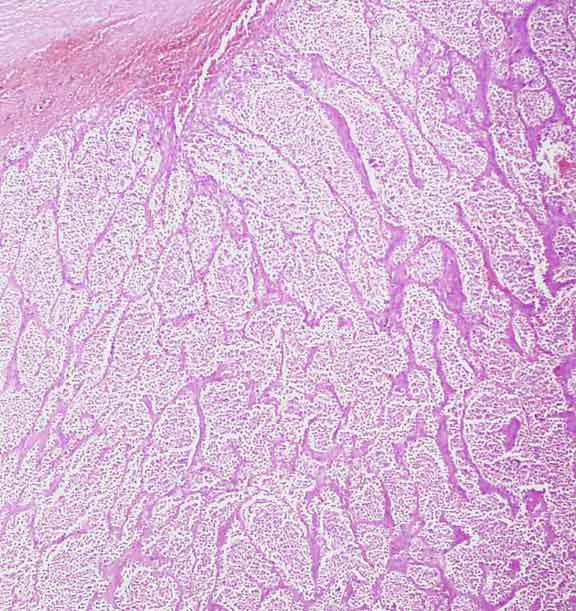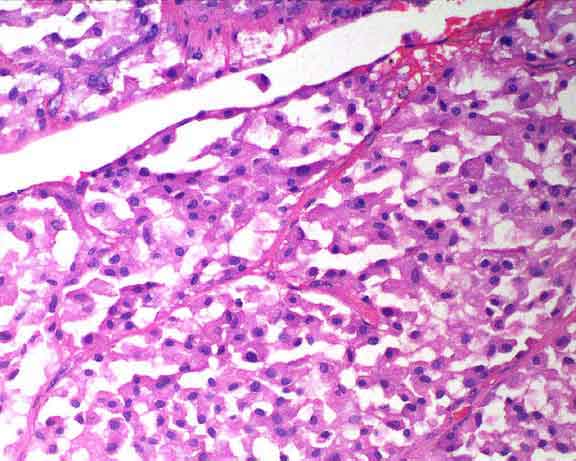|
|
|
Insulinoma:
History:
A 4 year old German Shepard presented with intermittent
convulsions over a 10 month period. Treated intermittently with primidone
and phenobarbitol. The animal died and at necropsy, a 1.5 cm diameter,
well circumscribed, firm, cream nodule was detected at the head of the
pancreas.

Exocrine pancreatic tissue replaced by a uniform population
of epithelial cells separated by a fine fibrovascular stroma. (x40)
Slide Ref: 856/85

Cells have a moderate amount of eosinophilic cytoplasm
and a small, round darkly staining nucleus. (x400)
Insulinoma:
This is a rare endocrine tumour in dogs and cats due
to a functional tumour (adenoma/adenocarcinoma) of B-cells in pancreatic
islets. Tumours are usually single or multiple firm nodules within the
pancreas. Neoplastic cells form cords, mitotic figures are rare and the
degree of encapsulation is a better guide to degree of malignancy. Metastases
occur early, typically to regional lymph nodes and liver. Excessive secretion
of insulin causes episodic hypoglycaemia usually during or immediately following exercise. Clinical signs reflect CNS and autonomic
hypoglycaemia and include weakness, ataxia, muscle tremors, seizures and
collapse.
|


